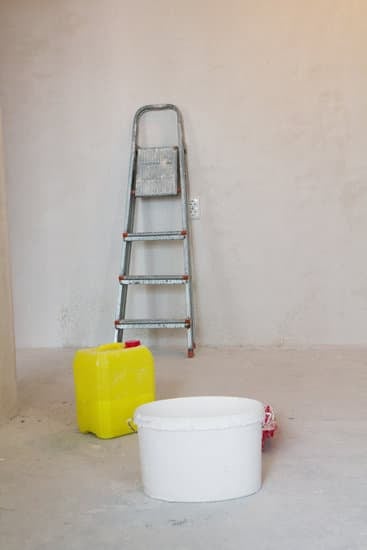Is a home improvement loan worth it? Homeowners often find themselves facing this question when considering renovations or upgrades to their properties. Home improvement loans are financial tools designed to help individuals fund projects that will enhance the value and functionality of their homes. These loans can be used for a variety of purposes, such as remodeling a kitchen, adding a new room, or repairing essential components of the property.
When deciding whether to pursue a home improvement loan, it is important for homeowners to weigh the potential benefits and drawbacks. While obtaining a loan allows for immediate access to funds necessary for renovations, there are also risks and considerations that should be carefully evaluated. Additionally, there are various types of home improvement loans available, each with its own set of features and requirements.
In this article, we will delve into the concept of home improvement loans and their purpose, exploring the advantages and disadvantages of utilizing this financial option. We will also discuss the different types of home improvement loans available in the market and provide guidance on how homeowners can determine if a loan is worth pursuing in their unique circumstances.
Whether you are contemplating minor updates or major overhauls to your living space, understanding the ins and outs of home improvement loans is essential in making an informed decision.
Pros of Getting a Home Improvement Loan
When it comes to making improvements to your home, a home improvement loan can provide numerous benefits. One major advantage is that it allows you to make necessary renovations or upgrades without having to drain your savings account.
This is especially beneficial for larger projects that would otherwise be financially burdensome. Whether you’re looking to remodel your kitchen, add an extra bathroom, or even invest in energy-efficient upgrades, a home improvement loan can make it all possible without causing a significant strain on your finances.
Another benefit of getting a home improvement loan is the potential increase in the value of your property. By making strategic and well-planned renovations, you can actually boost the overall worth of your home. This is particularly appealing for homeowners who are considering selling their property in the future, as it allows them to recoup their investment and potentially make a profit.
Additionally, obtaining a home improvement loan might also provide tax advantages depending on the type of loan and the purpose of the renovations. For example, if you use a home equity loan or line of credit for substantial home improvements, the interest paid on the loan may be tax-deductible. This can lead to significant cost savings over time and further justify taking out a loan for your home renovation needs.
| Advantage | Description |
|---|---|
| Financial Flexibility | Avoids draining savings for large projects |
| Increased Property Value | Potential for higher market price due to strategic renovations |
| Tax Advantages | Possibility of tax deductions for interest paid on certain loans |
Cons of Getting a Home Improvement Loan
Taking out a home improvement loan can be an enticing option for homeowners looking to upgrade their properties, but it’s important to consider the potential drawbacks and risks involved. Here are some factors to keep in mind when deciding if a home improvement loan is worth it:
- Potential for accruing additional debt: When you take out a home improvement loan, you are essentially adding to your existing debt load. If you already have other financial obligations, such as a mortgage or student loans, taking on more debt could further strain your finances.
- Risk of over-improving: While making upgrades to your home can increase its value, there is also the possibility of over-improving. This means investing more money into renovations than what the market value of your home can support. If you end up selling your home in the future, you may not recoup the full cost of the improvements.
- Interest costs and fees: Home improvement loans come with interest payments and potentially origination fees. Over time, these costs add up and can make the overall expense of the project higher than anticipated. It’s essential to carefully review the terms and conditions of any loan offer before committing to ensure that it is financially feasible.
In considering these potential downsides, it is essential for homeowners to weigh whether taking out a home improvement loan is truly worth it for their specific situation. It is imperative to conduct thorough research and consider all options before making a decision about financing major home renovations.
Types of Home Improvement Loans
When considering a home improvement project, it’s essential to weigh the financial options available to fund such renovations. One popular choice for homeowners is to take out a home improvement loan. There are various types of home improvement loans that individuals can consider, each with its own set of advantages and disadvantages.
One common option is a personal loan, which is an unsecured loan that does not require any collateral. This type of loan typically has a fixed interest rate and a set repayment period, making it easier for borrowers to budget for their monthly payments. Personal loans are often favored by those who do not want to tap into their home equity or have limited equity available.
Another option is a home equity loan, which allows homeowners to borrow against the equity they have built in their property. With this type of loan, the homeowner receives a lump sum of money and pays it back with fixed monthly payments over a predetermined period. Home equity loans usually have lower interest rates compared to personal loans because they are secured by the borrower’s property.
Lastly, there is the home equity line of credit (HELOC), which is similar to a credit card in that it allows homeowners to borrow up to a certain amount of money using their home as collateral. HELOCs typically have variable interest rates and offer flexible repayment terms. Borrowers can withdraw funds as needed during what is known as the draw period before entering the repayment period.
Understanding the different types of home improvement loans and their features can help homeowners make an informed decision about which option best suits their needs. Each type of loan offers unique benefits and considerations depending on individual circumstances and financial goals.
| Types of Home Improvement Loans | Key Features |
|---|---|
| Personal Loans | Unsecured; Fixed interest rate; Set repayment period |
| Home Equity Loans | Borrow against built-up equity; Lump sum payment; Lower interest rates |
| Home Equity Line of Credit (HELOC) | Borrow against available home equity; Flexible repayment terms; Variable interest rates |
How to Determine if a Home Improvement Loan Is Worth It
When considering whether a home improvement loan is worth it, homeowners must carefully evaluate their specific situation to determine if taking out a loan for renovations is a viable option. Here are some key factors to consider when making this decision.
Assess Your Financial Situation
Before deciding on whether to take out a home improvement loan, it’s important to assess your current financial situation. Evaluate your income, savings, and existing debt to determine if you can afford monthly loan payments. Additionally, consider any upcoming major expenses or financial goals that may impact your ability to repay the loan.
Evaluate the Scope of Your Home Improvement Project
Another crucial aspect to consider is the scope of your home improvement project. Determine the estimated cost of the renovations and compare it to your available funds. If the cost exceeds your savings and you don’t want to deplete your emergency fund, a home improvement loan may be a practical solution.
Weigh the Potential Return on Investment
Consider whether the improvements you plan to make will increase the value of your home. Aesthetic upgrades like kitchen and bathroom remodels often yield high returns on investment, making them more justifiable for financing. In contrast, if you’re considering purely cosmetic changes that won’t add significant value to your property, it may not be worth taking out a loan.
Ultimately, deciding if a home improvement loan is worth it depends on your individual circumstances. By carefully evaluating these factors and weighing the pros and cons, homeowners can make an informed decision about pursuing financing for their renovation projects.
Tips for Getting the Best Home Improvement Loan
When considering a home improvement loan, it’s important to explore different options and determine which one is the most favorable for your specific situation. Here are some tips for getting the best home improvement loan:
1. Research Different Lenders: Take the time to shop around and compare interest rates, terms, and fees from various lenders. Look at traditional banks, credit unions, online lenders, and peer-to-peer lending platforms to find the best deal.
2. Check Your Credit Score: Your credit score plays a significant role in the interest rate you’ll receive on a home improvement loan. Before applying, make sure to check your credit report for any errors and take steps to improve your score if needed.
3. Consider Home Equity Options: If you have built up equity in your home, you may qualify for a home equity loan or line of credit with lower interest rates compared to personal loans. However, it’s important to weigh the risks of using your home as collateral.
4. Negotiate Terms: Don’t be afraid to negotiate with lenders for better terms and lower fees. If you have a strong credit history and financial stability, you may have leverage to request more favorable conditions on your loan.
By following these tips and taking the time to research and evaluate different options, homeowners can increase their chances of securing the best possible terms and interest rates for a home improvement loan.
Real-Life Examples
Many homeowners may wonder if a home improvement loan is worth it, and one way to understand the benefits of this financial tool is through real-life examples. These success stories can provide insight into how others have utilized home improvement loans to enhance their properties and improve their overall living experience.
Case Study 1: The Smith Family
The Smith family had been considering a kitchen renovation for years but struggled to save up the necessary funds. With the help of a home improvement loan, they were able to tackle the project sooner than expected.
The newly renovated kitchen not only increased the value of their home but also provided a more functional and aesthetically pleasing space for cooking and entertaining. The Smiths found that the convenience and satisfaction of enjoying their updated kitchen outweighed the cost of the loan.
Case Study 2: The Garcia Residence
Mr. and Mrs. Garcia decided to take out a home improvement loan to invest in solar panels for their home. While there was an upfront cost, they quickly realized significant savings on their electricity bills. Over time, the reduction in energy expenses combined with the positive impact on the environment made them confident that obtaining a loan for this eco-friendly upgrade was well worth it.
Case Study 3: The Johnsons’ Home Addition
The Johnson family needed more living space as their children grew older. They opted for an extension project funded by a home improvement loan, allowing them to create an additional bedroom and bathroom. This not only met their current needs but also increased the overall value of their property. The Johnsons found that the comfort and functionality added by these new spaces made them feel like investing in a home improvement loan was a valuable decision.
By sharing these real-life examples, homeowners can gain insight into how others have used home improvement loans as an effective means of upgrading and enhancing their properties in various ways. These success stories illustrate different scenarios where taking out a loan for home improvements proved to be worth it for these individuals or families who achieved their desired outcomes despite initial financial investments.
Conclusion
In conclusion, the decision to take out a home improvement loan is not one to be taken lightly. There are definitely advantages to using a loan for home renovations, such as being able to make upgrades that can increase the value of your property or enhance its livability.
Additionally, home improvement loans can provide homeowners with the funds they need to complete necessary repairs or updates that they otherwise would not be able to afford. However, there are also potential drawbacks and risks associated with taking out a loan for home improvements, such as accruing debt and paying interest over time.
Ultimately, whether a home improvement loan is worth it depends on each homeowner’s individual circumstances. It is important to carefully assess your financial situation and weigh the pros and cons before making a decision.
Consider factors such as how much equity you have in your home, what your credit score is, how much you need to borrow, and the potential return on investment for the renovations you plan to undertake. By thoroughly evaluating these aspects, you can determine if taking out a home improvement loan is a feasible option for you.
In the end, while a home improvement loan can be beneficial in certain circumstances, it is important to approach the decision with caution and careful consideration. By doing your research, seeking advice from financial experts, and making an informed choice, you can ensure that any investment in your home is worth it in the long run.
Frequently Asked Questions
What Are the Pros and Cons of a Home Renovation Loan?
Home renovation loans can be beneficial because they provide funding for necessary home repairs or improvements. They often have lower interest rates than credit cards and can be tax-deductible. However, they also come with the risk of adding more debt and potentially decreasing the home’s value if not used wisely.
What Is the Average Length of a Home Improvement Loan?
The average length of a home improvement loan varies depending on the lender and the specific terms of the loan. Typically, these loans can range from 2 to 12 years, with some lenders offering longer terms for larger loan amounts. It’s important to carefully consider the repayment period when choosing a loan.
What Is the Difference Between a Home Loan and a Home Improvement Loan?
The main difference between a home loan and a home improvement loan is their intended use. A home loan, or mortgage, is specifically used to purchase a property, while a home improvement loan is meant to finance renovations or repairs on an existing property.
Additionally, home improvement loans may have higher interest rates since they are considered riskier than traditional mortgages due to the fluctuating value of properties after improvements are made.

I’m thrilled to have you here as a part of the Remodeling Top community. This is where my journey as an architect and remodeling enthusiast intersects with your passion for transforming houses into dream homes.





